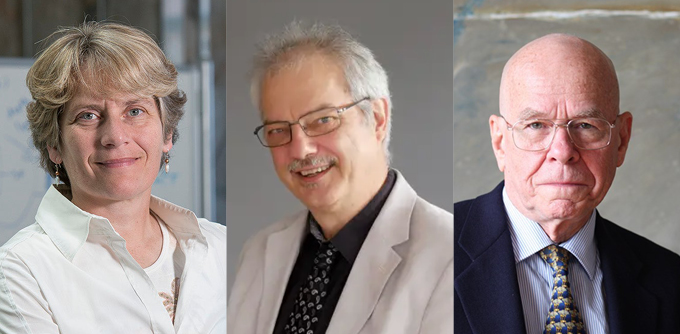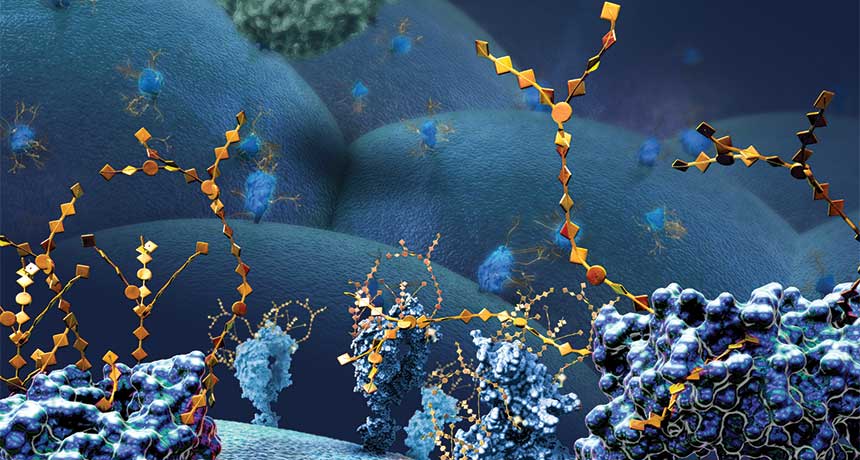The winner of the toolkit for connecting molecules such as Lego building blocks, has been awarded 2022 Nobel Prize in Chemistry.
In a press conference in Stockholm, the Royal Swedish Academy of Sciences announced on October 5 that Morten Meldal of University of Copenhagen, Carolyn Bertozzi of Stanford University, and Barry Sharpless of Scripps Research Institute La Jolla will equally share the prize for click chemistry. These tools allow scientists construct complex molecules easily in the lab as well as inside living organisms.

“The good thing with this discovery is that it can be used for almost everything,” said Olof Ramström, a chemist at the University of Massachusetts Lowell and a member of the Nobel committee for chemistry. It can be used to build drug molecules, create new materials, and track biomolecules between cells.
“We’re kind of at the tip of the iceberg already in terms of applications,” says Angela Wilson, president of the American Chemical Society. “I think this chemistry is going to revolutionize medicine in so many areas.”
Around 20 years ago, Sharpless introduced “click chemistry” — a way to simply and quickly attach two compounds using certain connector molecules. But finding these Lego-like connector molecules that can bond together in a chemical reaction wasn’t easy. Sharpless and Meldal found a solution by themselves.
By adding a smidge of copper to a mixture containing two other small molecules — called an azide and an alkyne — the scientists could rapidly snap the two molecules together into a ring-shaped chemical. Without the copper, the molecules would eventually combine, but sluggishly, Ramström said.
The reaction quickly “gained enormous interest across chemistry and related fields,” he added. Even though scientists would later discover a handful of other molecules that could snap together in the same fashion, that first reaction is considered the “crown jewel of click reactions.”
Although catalyzing chemical reactions with copper can work in a glass container, the metal can damage living cells. Bertozzi developed a method to create click chemistry that does not involve copper. Scientists can now create chemical reactions within organisms without disrupting their normal cell functions.
Bertozzi tricked cells into incorporating a click chemical into sugars decorating the cell’s surface. When scientists expose these cells to a different click chemical, a type of alkyne, the two can snap together, just like the molecules in Sharpless’ and Meldal’s reactions. Scientists can lighten the cells’ surfaces by linking alkyne and green-glowing molecules.
“Imagine you could attach shining molecules to biomolecules in a living cell. Then, you could observe them through a microscope to see their movement and where they are. This is what Carolyn Bertozzi did,” said Johan Åqvist, a theoretical chemist at Uppsala University in Sweden and chair of the Nobel committee for chemistry.
Bertozzi’s specialty has been studying sugar molecules, which “are incredibly difficult to work with,” says Leslie Vosshall, a neuroscientist at the Rockefeller University in New York City, who is the vice president and chief scientific officer at the Howard Hughes Medical Institute. She says that there are straightforward methods for looking at DNA,RNA, and proteins. But not for sugars. “Sugars are the dark matter of the cell.”
Scientists can create new treatments by targeting sugars that are present on cell surfaces. Bertozzi, along with her colleagues, were able for instance to Deactivate and target sugars These were used to hide tumor cells from T cells (SN: 3/21/17).
Bertozzi is an HHMI investigator. Since 1901, 59th woman to be awarded the Nobel PrizeOnly the eighth woman to win a prize for chemistry. Emmanuelle Charpentier, Jennifer Doudna, and Jennifer Doudna, who were awarded chemistry Nobels in 2021 for their work on the CRISPR is a gene-editing tool. (10/7/21).
“Carolyn is… one of the astonishingly few women in chemical biology,” Vosshall says. “Her lab has been a generative place that has inspired women chemists and put them out into the world.”
When awakened by the news around 3 a.m. Pacific Time, Bertozzi said, “I’m absolutely stunned. I’m sitting here and can hardly breathe.” Calling the middle-of-the-night phone call a shock is an understatement, she added. “I’m still not entirely positive that it’s real, but it’s getting realer by the minute.”
Bertozzi, Meldal and Sharpless will share the prize — 10 million Swedish kronor, roughly $917,000. Sharpless won the Nobel in 2001, sharing the prize with Meldal for his work on. Development of catalysts for oxidation reactions.



